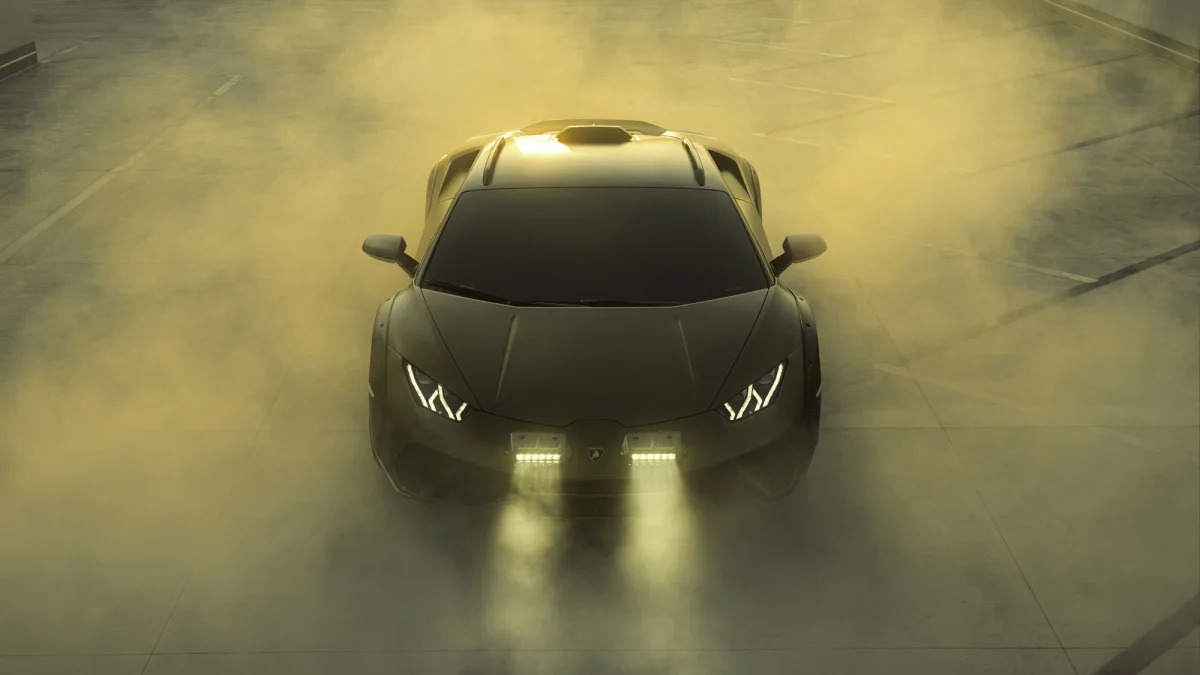Lamborghini broke new ground (literally and metaphorically) by launching an off-road-ready variant of the Huracán called Sterrato. It's not the brand's first off-roader; that branch of the family tree includes the LM002 built in the 1980s and the Urus. But it's the only Lamborghini that has made the improbable leap from the track to the trail. I sat down with Rouven Mohr, the head of the firm's research and development department, to find out how and why the Sterrato came to life. Interestingly, it started with a wild idea floated by executives during a dinner.
[The following has been edited for clarity.]
RG: What's the story behind this car?
RM: I have a personal connection to this project. The basic idea was born at a dinner I attended the first time I worked for Lamborghini, in 2017. I was eating with Maurizio Reggiani, my former boss, and Mitja Borkert, our chief designer, right after a test of the Urus. We were so happy talking about how much fun the Urus is to drive on gravel, and we said, "This would be even cooler with a super-sports car."
At that time, I was responsible for whole vehicle development. When I got back to the office, I decided to take an old Huracán durability test car that was scheduled to be scrapped and build a demo car. Everybody was so in love and agreed it was very cool, but based on other priorities the company decided to stop [the project]. When [CEO] Stephan Winkelmann returned to Lamborghini, he saw the car and asked why we didn't build it. So, we restarted the project. I'm back at Lamborghini now, and it's a big pleasure for me to bring this project to the market.
RG: Beyond the cool factor, what was your goal during the project?
RM: This car's mission is quite easy to explain. At Lamborghini, we always have two pillars. One is performance, which means pure numbers like top speed and lap times. It's not only Lamborghini [that can deliver this], however, because a lot of other brands also have the numbers. We are always looking for something unexpected that improves the driving thrill, the overall experience, and we recognized after testing the demo car that there is really nothing comparable from the perspective of pure emotional driving behavior on the market.
The mission of this car is to bring maximum driving fun, not only on the track but also on low-grip surfaces. The mission of this car is transferring the driving experience that we have from the Huracán STO on the track to low-grip surfaces. It's also important to understand that this car's mission isn't off-roading in the classic sense of the term; it's not an off-road parkour car. Its purpose is fast off-roading. I'm always speaking about on-track and off-track, not so much about off-road. In my mind, off-road you're always going a little bit slow and climbing up somewhere. This is not the intention; this car can also climb but its intention is going sideways on gravel, rally-style.
RG: Considering this car has no predecessor and no direct rivals, how did you benchmark it?
RM: Sometimes, a car manufacturer says, "This is a new segment!" but in this case it's true; there's no other comparable car on the market. Our benchmark was to maximize the smiling of the people that are driving the car, stepping out, and saying, "This is crazy, I've never driven something like this!" For sure we also did acceleration tests, but the main benchmark was the smiles of the people jumping out of the car.
My philosophy is that if you look at all of the supercars on the market, the lap times are getting faster, the acceleration is getting faster, the horsepower is getting crazy, but at the end of the day if you ask yourself which one you want to drive on a Sunday morning to have fun, it's not always the car that achieved the best performance on the track. Driving isn't always related to pure numbers.
RG: When this project began, your range also included the Aventador. Why did you choose the Huracán?
RM: The Huracán's basic layout makes it easier to control when going sideways. In the Aventador, the engine and the transmission were in the tunnel so the mass was centralized; if the car starts to rotate you need more skills to control it. Second, the traction level of the Aventador is much higher because in the street-legal model you have 355-section rear tires. So, it's much harder to make the Aventador a playful car from a handling perspective. And, the weight of the car is higher. The Aventador was not suited to this kind of application.
RG: Porsche's recently-unveiled 911 Dakar sounds a lot like the Sterrato on paper; it's a lifted sports car. Are these projects related?
RM: They're really different. We are good colleagues, so we are in good contact. They knew about our project, and we knew about theirs. It's a similar concept because you take a sports car or a super-sports car and elevate it, but the mission of the car is completely different.










Sign in to post
Please sign in to leave a comment.
Continue